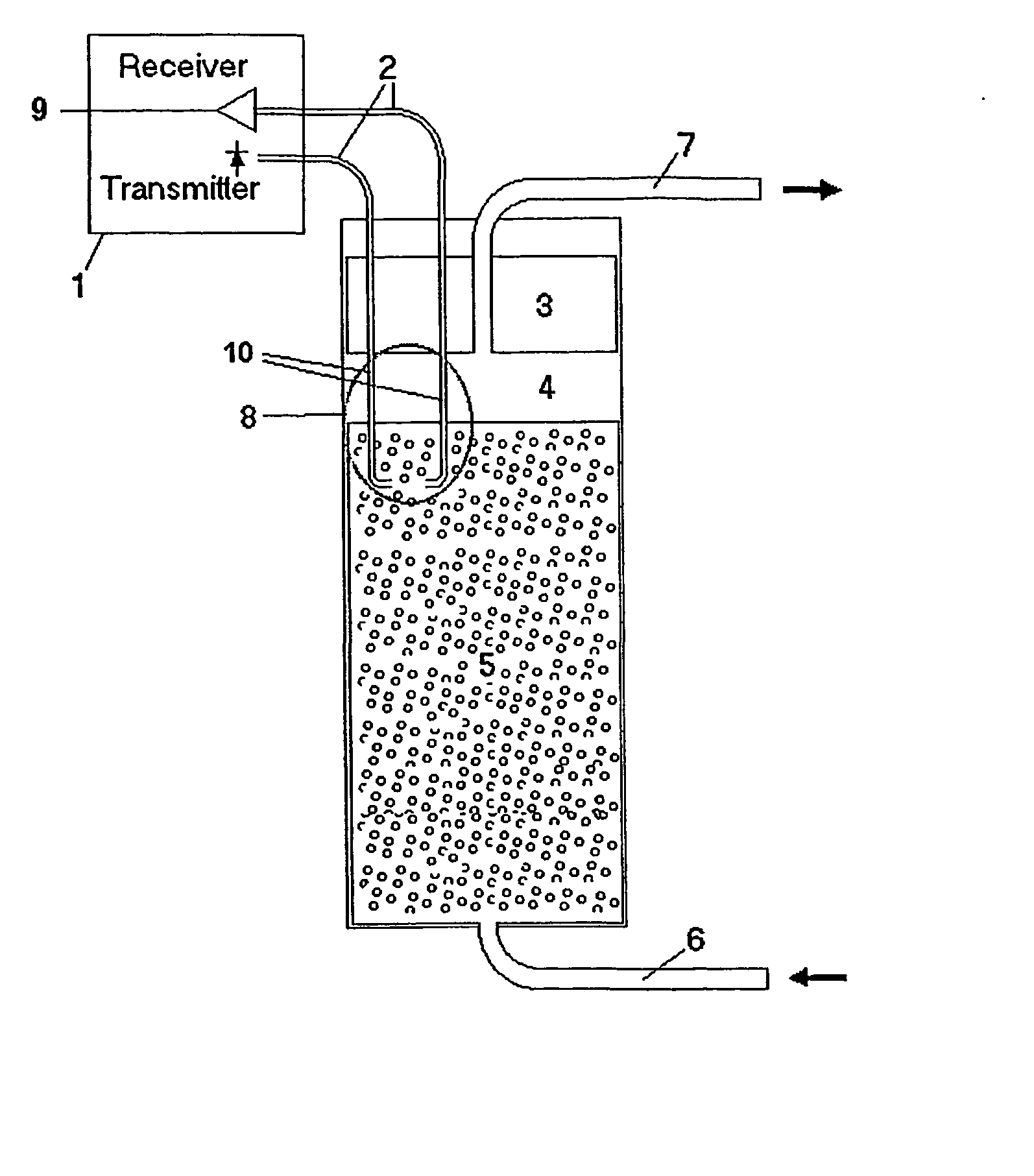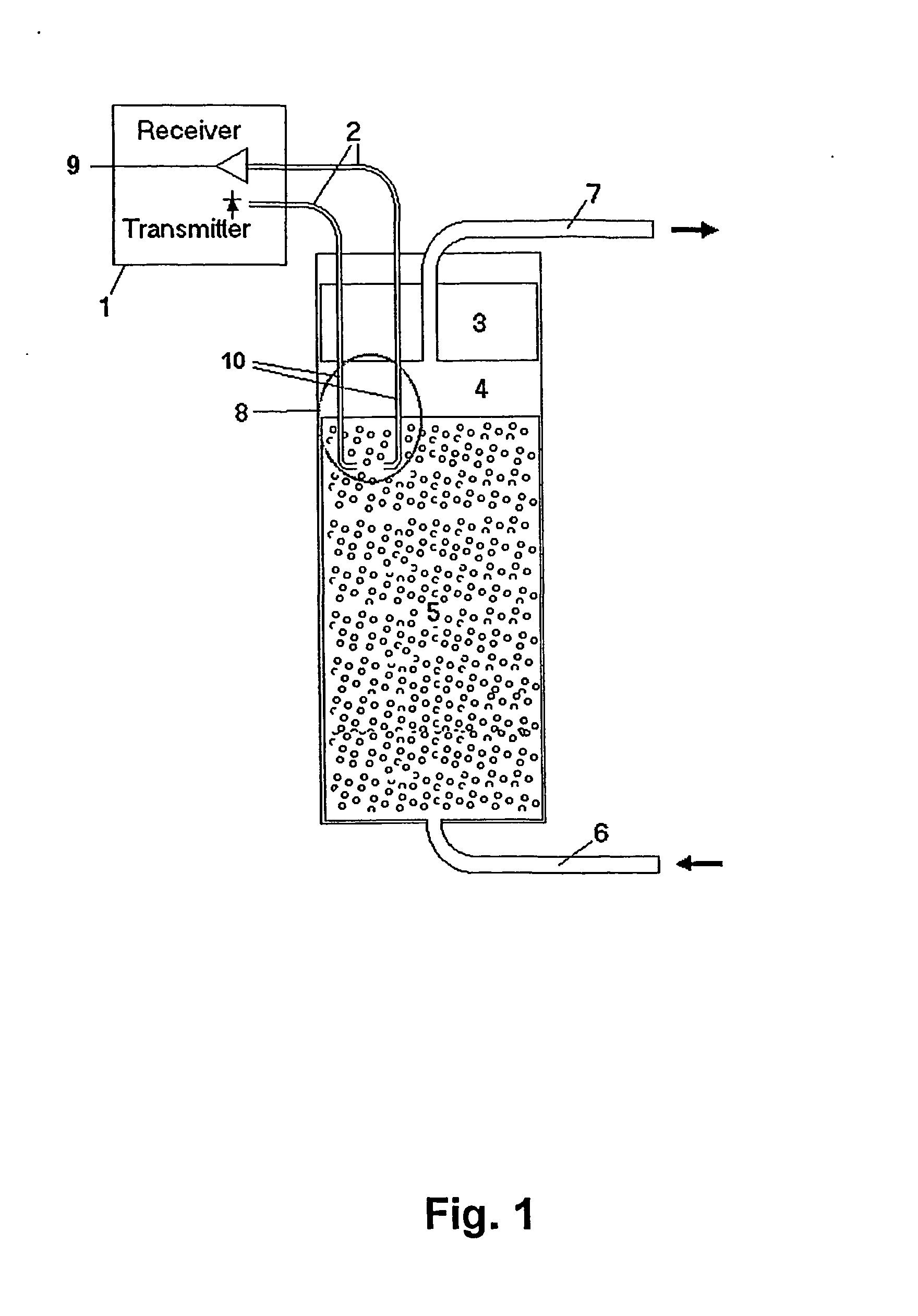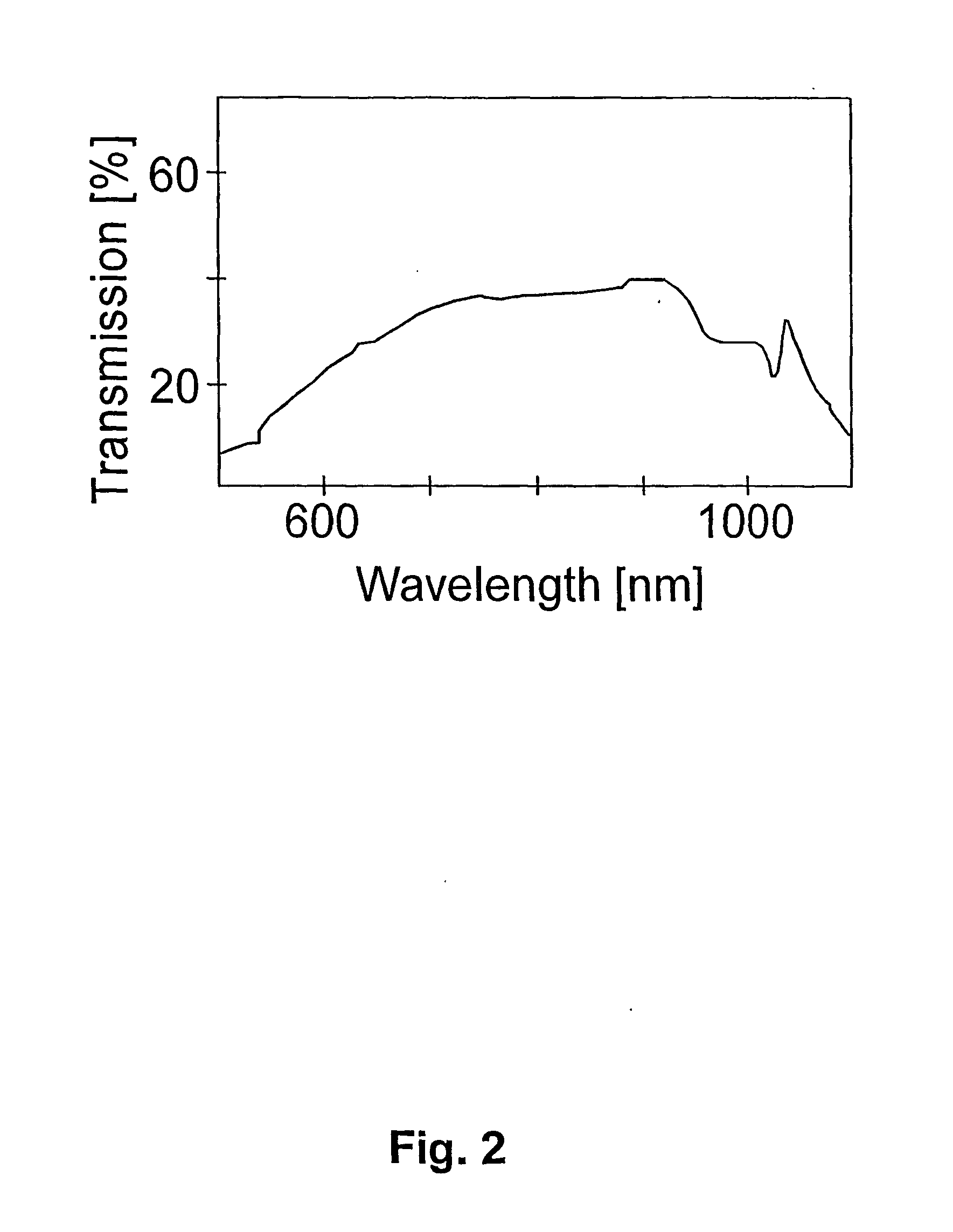On-line monitoring and/or control of headspace in a fluid bed reactor system
- Summary
- Abstract
- Description
- Claims
- Application Information
AI Technical Summary
Benefits of technology
Problems solved by technology
Method used
Image
Examples
example 1
[0045] The fluid bed reactor system is illustrated in FIG. 1 and consists of a cylindrical column in which the particles suspended in the carrying medium are contained. The medium 6 is pumped into the bottom of the column whereby the volume of the particles suspended in the medium is expanded. The medium is pumped out of the column through an outlet 7 mounted on a floating body 3. Hereby, two volumes are formed in the column: One fluid bed phase 5 containing particles suspended in the medium and one phase 4 substantially void of particles but containing media (headspace).
example 2
[0046] Monitoring of the interface between the headspace and the fluid bed of particles suspended in the medium does not allow for dynamic control of the fluid bed system, as the signal would be an on / off signal indicating whether the interface was above or below the level of detection. However, it was found that an electromagnetic radiation signal traversing the fluid bed was not totally extinguished but actually showed a significant signal. Furthermore, it was found that this signal was dependent on the position of the sensor in respect to the interface between the headspace and the fluid bed of particles suspended in the medium. Thus, it was possible to detect particle density gradients within the fluid bed of particles, which could be used as a tool in controlling of the expansion of the system. It was expected that the macrostructure of the particles e.g. size, shape, material etc. and material in the carrying medium would effect the signal. Therefore a transmitting signal at f...
example 3
[0054] The sensor system as described and operated in Example 2 was used to verify the existence of a particle density gradient in a fluid bed of particles. The optical transmitter 1 produced a monochromatic and incoherent and pulse modulated beam of light at a frequency of 660 nm. The receiver 1 demodulated the signal and formed an analogue signal 9 corresponding to the received signal. The transmitter and receiver were physically contained in the same unit.
[0055] The analogue output signal 9 from the receiver was proportionate to the power of the received signal relative to the power of the transmitted signal. Alternatively, the intensity, luminosity or fluence of the received signal can be measured, depending on the specific set-up. The mixture of fluid bed particles and the carrying medium causes the difference in transmitted and received signal.
[0056] The sensor head 8 was mounted on the floating body 3 so that the ends of the stainless tubes 10 were at a given distance below t...
PUM
| Property | Measurement | Unit |
|---|---|---|
| Flow rate | aaaaa | aaaaa |
| Size | aaaaa | aaaaa |
| Density | aaaaa | aaaaa |
Abstract
Description
Claims
Application Information
 Login to View More
Login to View More - Generate Ideas
- Intellectual Property
- Life Sciences
- Materials
- Tech Scout
- Unparalleled Data Quality
- Higher Quality Content
- 60% Fewer Hallucinations
Browse by: Latest US Patents, China's latest patents, Technical Efficacy Thesaurus, Application Domain, Technology Topic, Popular Technical Reports.
© 2025 PatSnap. All rights reserved.Legal|Privacy policy|Modern Slavery Act Transparency Statement|Sitemap|About US| Contact US: help@patsnap.com



